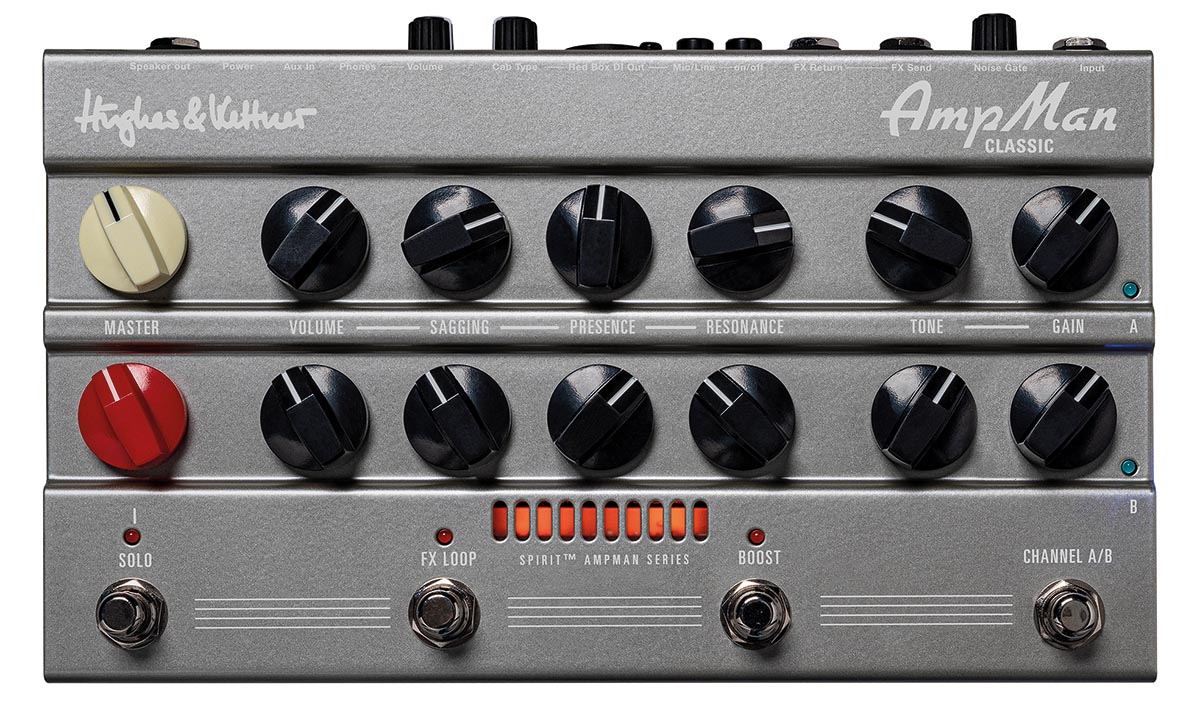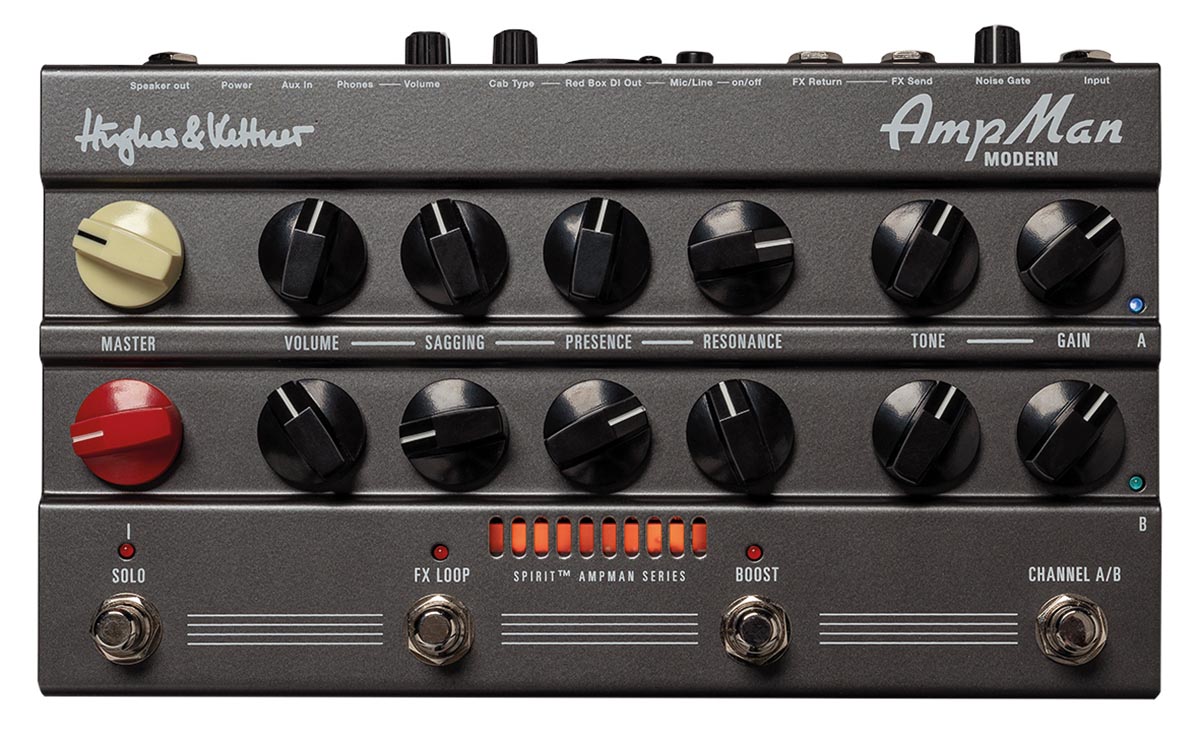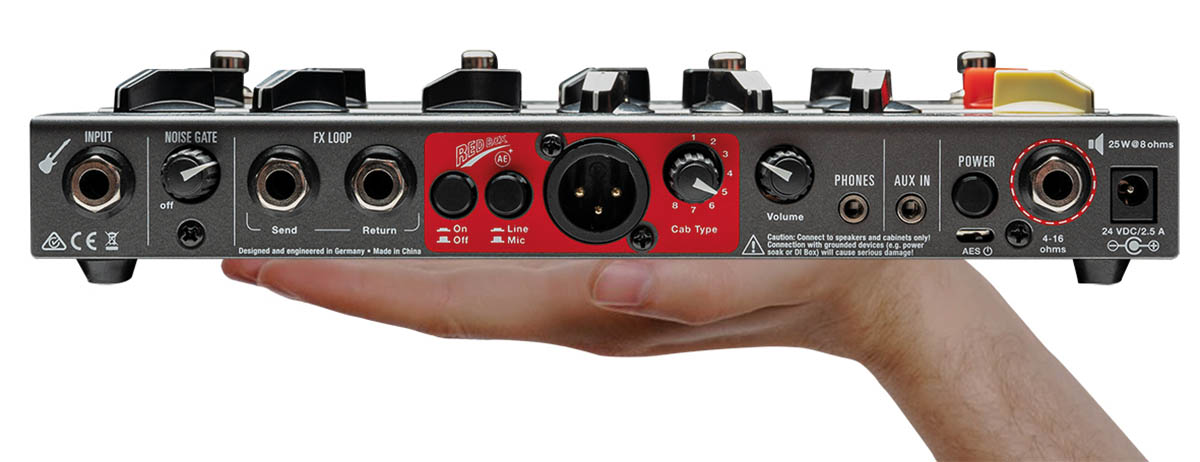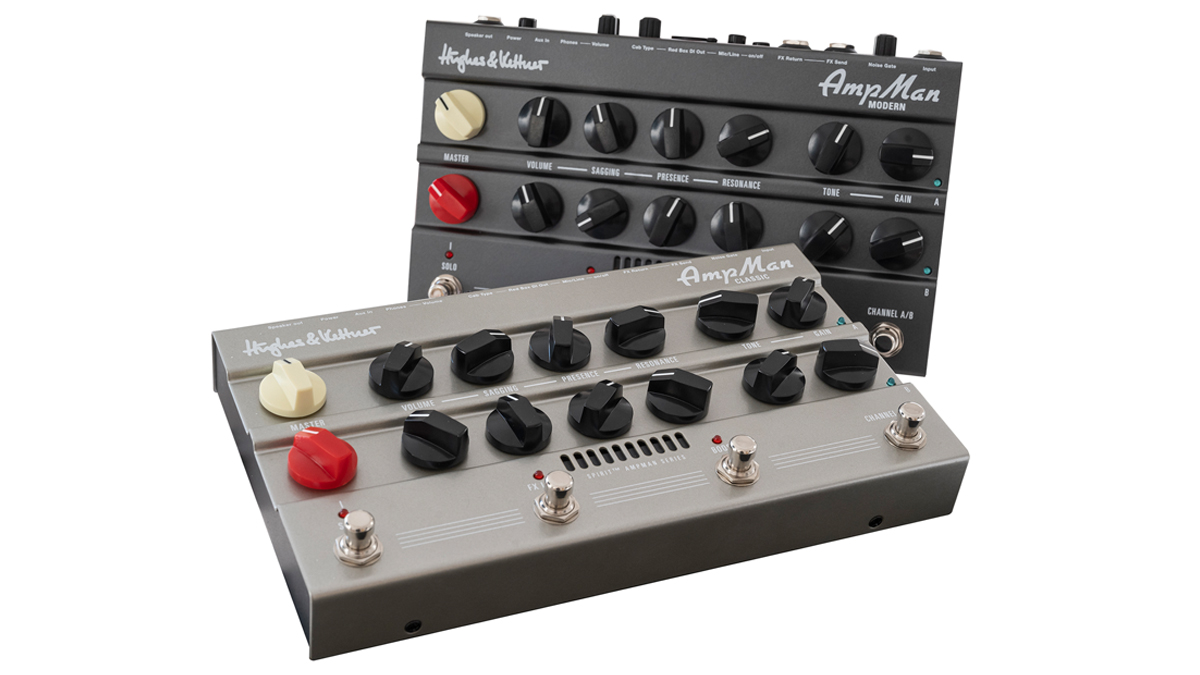Guitar World Verdict
The Hughes & Kettner AmpMan Classic and Modern are equally at home on the performance stage and recording studio, providing a wealth of excellent tones and highly versatile performance features.
Pros
- +
Two fully independent channels.
- +
Compact.
- +
Red Box provides eight separate speaker cab sim settings.
- +
Built-in adjustable noise gate and footswitch-selectable FX.
Cons
- -
Hard to read text on Classic model’s silver-gray enclosure.
You can trust Guitar World
The industry’s very first “amp in a box” products (i.e. sophisticated devices in a pedal-format that provide a wide variety of tones for direct recording or plugged into the front of an amp) starting appearing on the market just about three decades ago.
Introduced in 1991, the Hughes & Kettner Tubeman was a highly acclaimed product that proved that a small, compact device could truly deliver genuine amp tones. The Tubeman was the first of several “amp in a box” products introduced by Hughes & Kettner over the years, with each new product improving upon an already great thing.
So, here we are 30 years later, and Hughes & Kettner has introduced an entirely new generation of these products: the AmpMan Classic and AmpMan Modern. Simply put, all those years of experience truly show as the AmpMan is a brilliantly conceived product filled with useful features.
Perhaps most importantly, the AmpMan Classic and Modern provide much more than amp simulation and are actually bona fide amps that can drive a speaker cabinet on their own, in addition to sounding great for direct recording applications, plugged into a live sound mixing console or as a standalone headphone amplifier.

Features
The AmpMan Classic and AmpMan Modern share identical features with the exception of cosmetics and the voicing and tonal personality of Channel B.
Both models provide two fully independent channels. Channel A on both models provides a range of tones from clean to overdrive crunch. Channel B on the Classic model is voiced to provide classic rock and hot rodded British tones, while the Modern model delivers even higher amounts of gain, saturation and distortion.

Controls on both models consist of two fully independent sets of Volume, Sagging, Presence, Resonance, Tone and Gain knobs. The white knob on the far left controls master volume, while the red knob below dials in the Solo setting. Four footswitches control Solo, FX Loop, Boost and Channel A/B selection.
The rear panel is fully loaded with pro features, including an adjustable noise gate, mono FX loop, Hughes & Kettner’s world class Red Box DI with eight speaker cabinet types, balanced XLR output and line/mic level switch, 1/8-inch headphone output with volume control, 1/8-inch aux input and 4-16 ohm ¼-inch speaker output that allows the built-in 50-watt amplifier to drive an external speaker cabinet.
A Smart mode stores independent Boost and FX Loop settings for each channel. The AmpMan also automatically recalls noise gate and Red Box cabinet settings for each channel.

Performance
In addition to being a highly powerful and versatile direct recording tool, the AmpMan is truly a dual-channel 50-watt amp in a compact pedalboard-friendly format.
While its control and feature layout has more in common with a traditional guitar amp than today’s amp simulators and modeling products, both the Classic and Modern models provide a dazzling variety of tones similar to many popular and desirable amps.
The AmpMan’s single tone knob instead of individual treble, mid and bass EQ controls is not as limited as it may seem, as it can dial in a wide variety of tones ideal for electric guitar, ranging from a thick midrange sweet spot to scooped mids with boosted bass and treble.
The Presence and Resonance controls allow users to fine tune treble and bass response respectively, and the Sagging control can also refine the perceived bass response and midrange body while also altering the overall tightness or looseness of dynamic response.
The Red Box’s amp cabinets also greatly expand the range of tones and dramatically shape the overall tonal personality. The clean and overdrive tones of Channel A are simply stellar. This channel delivers ample clean headroom for fat, punchy country or blues solos as well as rich, dynamic rhythm work.
Pushed into overdrive, Channel A pumps out satisfying “plexi” grind with three-dimensional harmonic complexity. Channel B on the AmpMan Classic builds upon Channel A’s rich character to provide aggressive grinding power chords or smooth, singing solos.
The AmpMan Modern’s Channel B is the better choice for high-intensity high-gain tones with tight bottom end and sizzling upper midrange punch. My sole criticism is that the Classic model’s silver-gray housing can make the white lettering difficult to read in exceptionally bright or low light environments.
Specs
- PRICE: $399 / £319
- TYPE: 50-watt pedalboard guitar amplifier
- CHANNELS: 2 (Vintage and Metal on Modern, Vintage and Rock on Classic)
- CONTROLS: Two sets of independent controls for each channel, including Master Volume, Volume, Sagging, Presence, Resonance, Tone, Gain, plus footswitches for Solo, Boost, FX Loop, Channel A/B
- FEATURES: Integrated Red Box AE+ cab-emulated DI output, serial FX loop, Stereo aux-in, headphones out, IDB (Intelligent Dual Breakpoint) Noise Gate, channel-tailored boost, Solo Control ( Adjustable 0-+6dB, switchable)
- OUTPUTS: 4 to 16 Ohms, headphones out
- DIMENSIONS (W x H x D): 250 x 52 x 153 mm
- CONTACT: Hughes & Kettner
Chris is the co-author of Eruption - Conversations with Eddie Van Halen. He is a 40-year music industry veteran who started at Boardwalk Entertainment (Joan Jett, Night Ranger) and Roland US before becoming a guitar journalist in 1991. He has interviewed more than 600 artists, written more than 1,400 product reviews and contributed to Jeff Beck’s Beck 01: Hot Rods and Rock & Roll and Eric Clapton’s Six String Stories.
"I never use my tube amp at home now, because I have a Spark Live": 5 reasons you should be picking up the Positive Grid Spark Live in the massive Guitar Month sale
“Our goal is to stay at the forefront of amplification innovation”: How Seymour Duncan set out to create the ultimate bass amp solution by pushing its PowerStage lineup to greater heights













